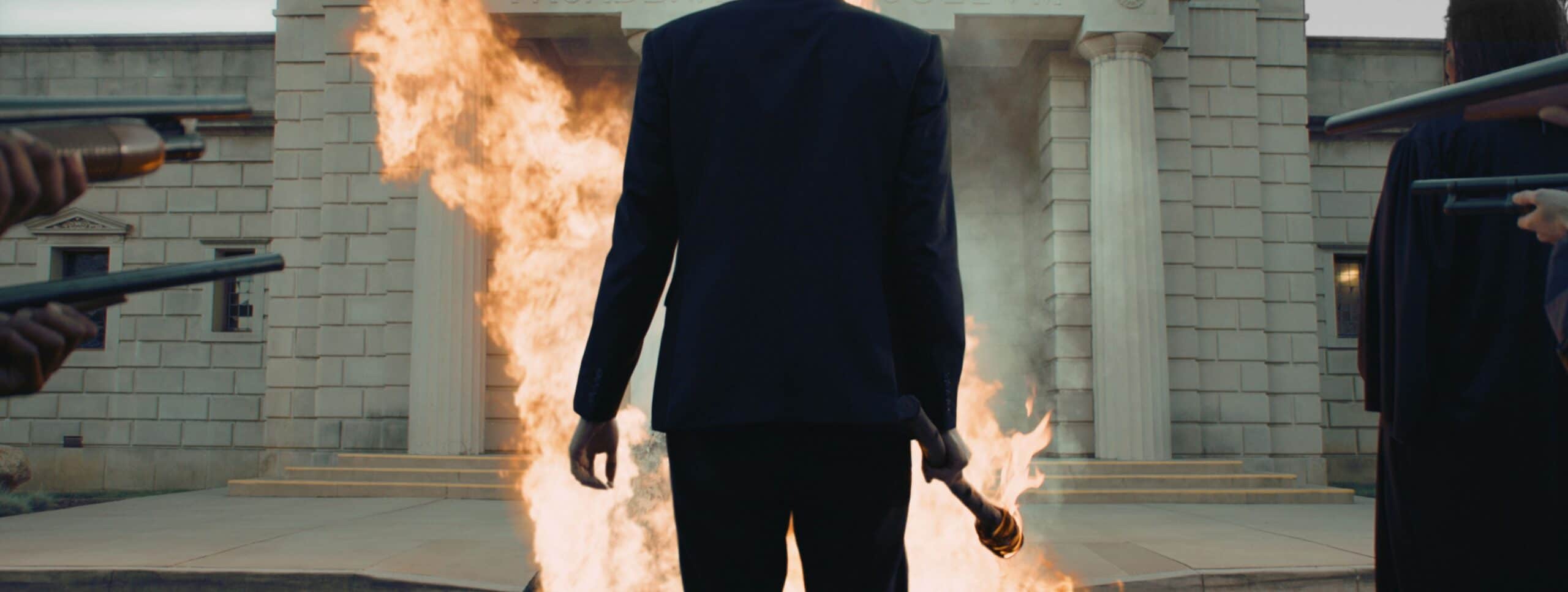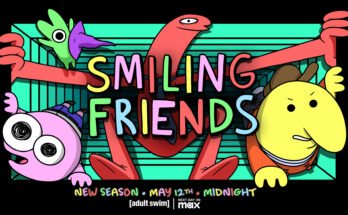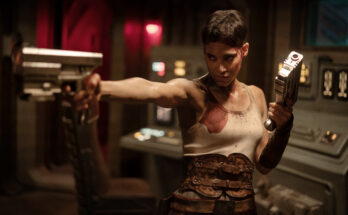Want to hear more from the actors and creators of your favorite shows and films? Subscribe to The Cinema Spot on YouTube for all of our upcoming interviews!
Managing editor & film and television critic with a Bachelor's of Arts in English Literature with a Writing Minor from the University of Guam. Currently in graduate school completing a Master's in English Literature.
This article is co-written by John Tangalin and Jordan Simmons.
Two months after the South by Southwest film festival, our review on Elle Callahan’s Witch Hunt is here. This woman’s cinematic endeavor has her as its writer, director, and even part of sound design. Minor spoilers ahead, as we will be discussing the film in its essence.
Plot Summary
Witch Hunt has a fascinating concept. It’s a world where witches and magic are very much real, very much feared. So much so that the United States government is actively trying to clamp down on the craft by locking up all alleged witches.
In the film, we follow Claire (Gideon Adlon), a somewhat quiet teenager who is keeping a secret. Back home her mother, Martha (Elizabeth Mitchell), is secretly harbouring two young witch sisters whose mother was recently been burnt at the stake. All seems to be going well until one mistake throws the household into suspicion. Soon, the neighbours and the local law enforcement have their eyes on their home.
Discussion
Witch Hunt doesn’t sound like much on paper, but it presents a wonderful story, paralleling real-world history from both the past and present. The only issue I had with these parallels was how there are witches attempting to cross the border from Mexico. It felt very on-the-nose and could have been smoothed out a bit better, in my opinion.
However, the other parallels with real-world history are very exciting to watch. Specifically, how sexism against women was one of the driving forces behind the persecution of witches in the past, and even today in some countries. The sexism that the female characters face was so well-written. Additionally, how they were able to connect the sexism of today with that of the past was brilliant. It just worked so well within the world of the film. The fact that we only see men in positions of power also helped add levity to these themes of sexism and female empowerment.
Testing for Witches
In Witch Hunt, we see school officials perform ridiculous checks on the schoolgirls as they search for “witches marks”. This is done by the “doctors” examining the length between freckles and moles. This stems from an old belief that a witch can be identified by a permanent marking made by the Devil to show the witches’ eternal worship to him.
Another test for witches is the classic cucking/dunking stools, wherein a witch sits upon a chair that is then dunked into a body of water. If the girl is able to free herself or floats to the top, then she is a witch. The film’s use of the dunking stools was an interesting addition to the film. This method is rarely seen in any films about witchcraft today. In fact, such a method helped bring a great levity of realism to Witch Hunt‘s story. Famously, these stools weren’t used exclusively on witches. They are also used on women who had simply been accusing of mundane crimes such as arguing or having a child outside of wedlock.
Performances
Adlon does outstanding in her role as the protagonist, Claire. Alongside her character are Martha and witch refugee, Fiona (Abigail Cowen), the older of the two sisters. Claire’s trauma and suspicious susceptibility to asthma attacks only make the film all the more intense. The actress’s dynamic with Mitchell’s character and with Cowen’s character are what sets the narrative in motion. It should be important to note the film’s major reference to another popular women-led film, to which Witch Hunt pays homage. The way Callahan’s film ends makes the viewer want to know what will happen next. Although, that will have to be up for interpretation.
Final Thoughts
Overall, Witch Hunt is a simple narrative to follow along with. Of course, its themes hit home with a lot of people, making it all the more relatable. Combining two eras’ forms of sexism is interesting, to say the least, but the actresses and the filmmaker do the most in this final product. Nico Aguilar and Tommy Oceanak’s cinematography is also important. However, some frames seem to be a bit off.
The film itself can sometimes feel as if you’re watching a low-budget VOD movie. Although, the filmmaker has done a great job of walking around any budgetary issues. For instance, the magic is given only a minimal amount of screentime. It only makes sense for the story because the sisters are in hiding. This brevity helps add to the shock value when we actually get to see magic performed, from the bar scene to the smaller scenes at home.
Have you seen this film yet? If so, what are your thoughts? Let us know! For more horror-related news and reviews, follow The Cinema Spot on Twitter (@TheCinemaSpot) and Instagram (@thecinemaspot_). You can also catch us on Facebook (TheCinemaSpotFB)!
Stay tuned for our SXSW interview with Elle Callahan!
Managing editor & film and television critic with a Bachelor's of Arts in English Literature with a Writing Minor from the University of Guam. Currently in graduate school completing a Master's in English Literature.






